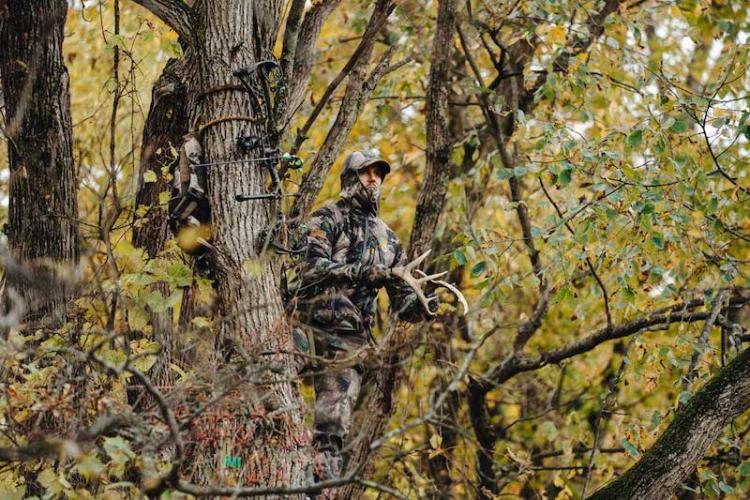While preparing to leave for my morning commute to work, I first walked into my backyard and looked over the large hayfield that bordered it. After all, it was mid-November, and the rumors that the bucks were chasing does were weighing heavily on my mind.
I walked 40 steps to the yard's edge and peeked into the field. Sure enough, a mature buck stood directly over a bedded doe 100 yards into the field. I quickly returned to my garage, picked up my binoculars, and revisited the yard's edge. The mature buck acted as if I was nowhere around. His sole focus was on the bedded doe, as he had her “locked down.”
Obtaining visual confirmation that the whitetail deer rut was in full swing before even leaving my house made it hard to continue my daily work schedule and not go hunting instead.
The whitetail rut is an exciting time for many hunters. Often, hunting trips are planned and time is scheduled off from work to coincide with the anticipated breeding season. The popularity and anticipation for hunting during the rut have been the reason behind the development of many apps that predict when the rut will occur in a specific hunting area. There have also been countless articles, books, and videos on how hunters can predict the rut and when they need to hunt. Because the rut can fluctuate due to different regions, weather, and much more, it becomes challenging to predict precisely when the rut will occur in a location. Below are three ways hunters can identify that the rut is in full swing, giving them the green light to go hunting.
SCRAPES PAUSE
One of the best ways to attract and keep an inventory of mature bucks during the pre-rut is using game cameras over scrapes. From mid-October through the first week or two of November, a buck will create scrapes to attract other deer and let other bucks in the area know of his presence.
Three to four weeks before the rut, does will visit a buck’s scrape, along with an array of other bucks seeking does that are nearing estrus. When hunters monitor scrapes with game cameras such as the Stealth Cam Connect Cellular Camera, they often can tell when the rut is occurring. When cameras reveal bucks disappearing from the scrapes, resulting in little activity, that is an excellent indicator that bucks are now seeking and chasing does who are ready to breed. When hunters receive MRI that bucks have left their scrapes, it is time to be in a treestand and ready for rutting action.
DAYLIGHT MOVEMENT
Game cameras have become one of the deer hunter’s best-used tools against patterning rutting bucks. As with monitoring scrapes to determine when the rut is near, cameras can also be used on the edge of food sources such as crop fields or food plots to capture the rut activity of mature bucks.
When cameras are placed in areas where deer naturally travel, buck movement can often be monitored. Throughout October and into the first weeks of November, most mature bucks that appear on game cameras occur at night. The rut is often near or in full swing when bigger bucks switch from nocturnal to daylight movement. Bucks transitioning from nighttime to daylight movement is one of the many reasons to enjoy hunting during the rut. During this period, most of a buck's normal defenses are put to the side, and all their time is spent chasing does to breed, allowing hunters to catch a glimpse of a big buck and hopefully make a harvest.
WORD OF MOUTH
One of the best ways to determine when the rut is in full swing is simply by keeping one's eyes and ears open, especially when traveling and during daily conversations with other people.
For many years, I have received confirmation of bucks rutting by keeping my eyes open while traveling to and from work or whenever I travel in my vehicle. On many occasions, there is one week of the year when every field or timber edge I venture across while driving has a mature buck chasing a doe. When I mention “seeing bucks,” I mean the mature ones that are never seen until the rut. When all their defenses are down, there is no way to predict when you will encounter a buck. The unpredictability that occurs is a sure sign that the rut is on.
Because I am blessed to live in a small town, I can typically tell when everyone is seeing big mature bucks. At the local hardware store, feed store, gas stations, and restaurants, the topic of conservation is likely where bucks have been encountered and how they are chasing does. By listening to word of mouth from hunters and others such as delivery drivers, truck drivers, or individuals who spend an extended time on the road, it becomes clear when significant buck movement has ramped up. When the excitement is in the air, and the day's hot topic is buck movement, it is time to hunt.
Heath Wood







